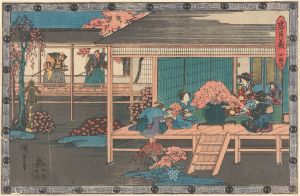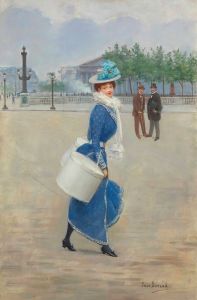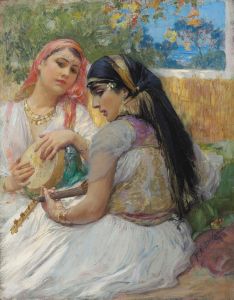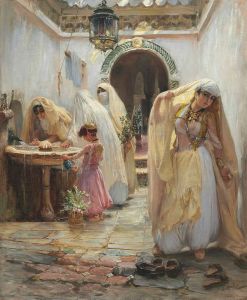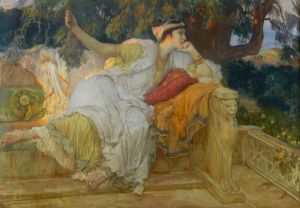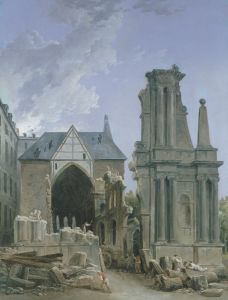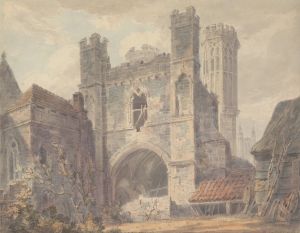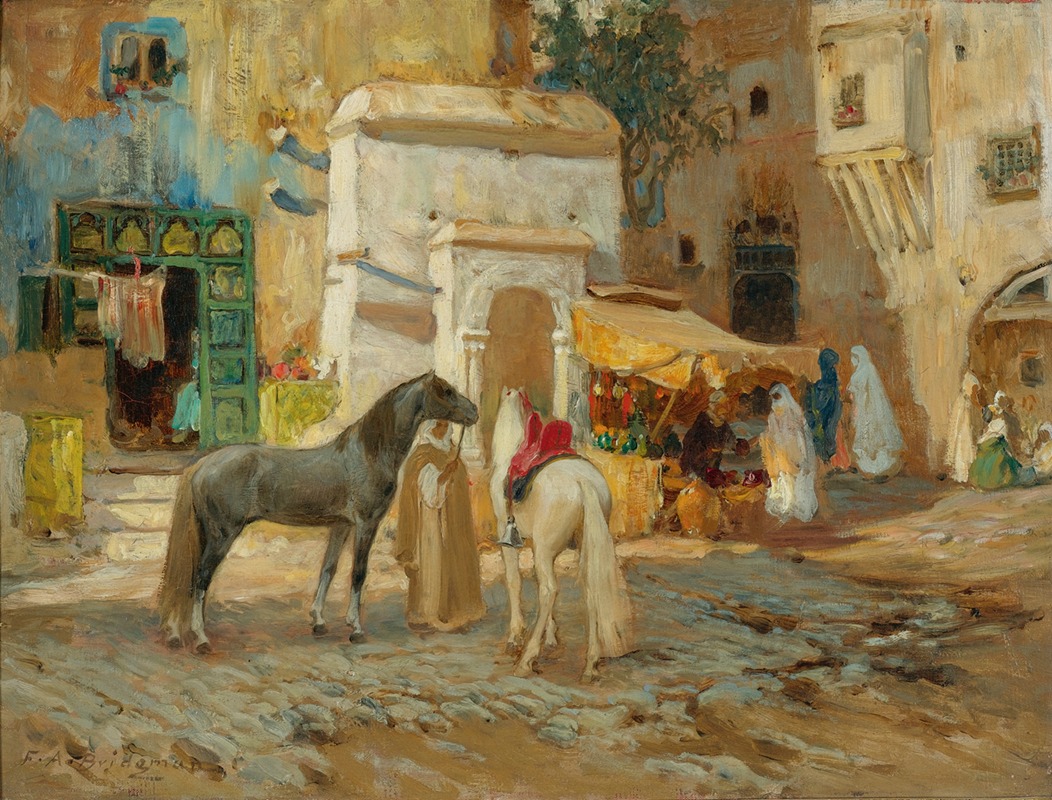
The Market Square
A hand-painted replica of Frederick Arthur Bridgman’s masterpiece The Market Square, meticulously crafted by professional artists to capture the true essence of the original. Each piece is created with museum-quality canvas and rare mineral pigments, carefully painted by experienced artists with delicate brushstrokes and rich, layered colors to perfectly recreate the texture of the original artwork. Unlike machine-printed reproductions, this hand-painted version brings the painting to life, infused with the artist’s emotions and skill in every stroke. Whether for personal collection or home decoration, it instantly elevates the artistic atmosphere of any space.
Frederick Arthur Bridgman was an American artist known for his detailed and vibrant depictions of scenes from the Middle East and North Africa, often categorized under the Orientalist movement. Born in 1847 in Tuskegee, Alabama, Bridgman moved to Paris in 1866 to study art, where he became a pupil of the renowned academic painter Jean-Léon Gérôme. Bridgman's works are characterized by their meticulous attention to detail and vivid portrayal of exotic locales, which were inspired by his extensive travels.
One of Bridgman's notable works is "The Market Square," which exemplifies his fascination with the daily life and architecture of the regions he visited. Although specific details about "The Market Square" are limited, Bridgman's oeuvre typically captures bustling scenes filled with vibrant colors and intricate details that reflect his keen observation and artistic skill.
Bridgman traveled extensively throughout North Africa and the Middle East during the late 19th century, visiting countries such as Egypt, Algeria, and Morocco. These travels provided him with a wealth of inspiration and material for his paintings. His works often depict market scenes, street life, and architectural elements, showcasing the cultural diversity and richness of these regions. "The Market Square" likely follows this thematic focus, presenting a lively depiction of a public space where people gather, trade, and interact.
Bridgman's paintings are known for their ethnographic detail, capturing the clothing, architecture, and customs of the people he observed. His ability to render textures and light with precision adds a sense of realism and immediacy to his works. This attention to detail not only reflects his artistic talent but also his desire to present an authentic representation of the places he visited.
Throughout his career, Bridgman exhibited his works widely, gaining recognition and acclaim in both Europe and the United States. His paintings were featured in prestigious venues such as the Paris Salon, and he received numerous awards for his contributions to the art world. Bridgman's work remains significant for its role in shaping Western perceptions of the Middle East and North Africa during the 19th century.
While "The Market Square" is just one example of Bridgman's extensive body of work, it embodies the qualities that define his artistic legacy: a commitment to detail, a fascination with exotic locales, and a talent for capturing the vibrancy of everyday life. Bridgman's paintings continue to be appreciated for their historical and cultural insights, as well as their aesthetic beauty.
In summary, Frederick Arthur Bridgman's "The Market Square" is a testament to his skill as an artist and his dedication to portraying the richness of the cultures he encountered. Through his work, Bridgman offers viewers a window into the past, allowing them to experience the sights and sounds of a world that fascinated him and continues to captivate audiences today.






